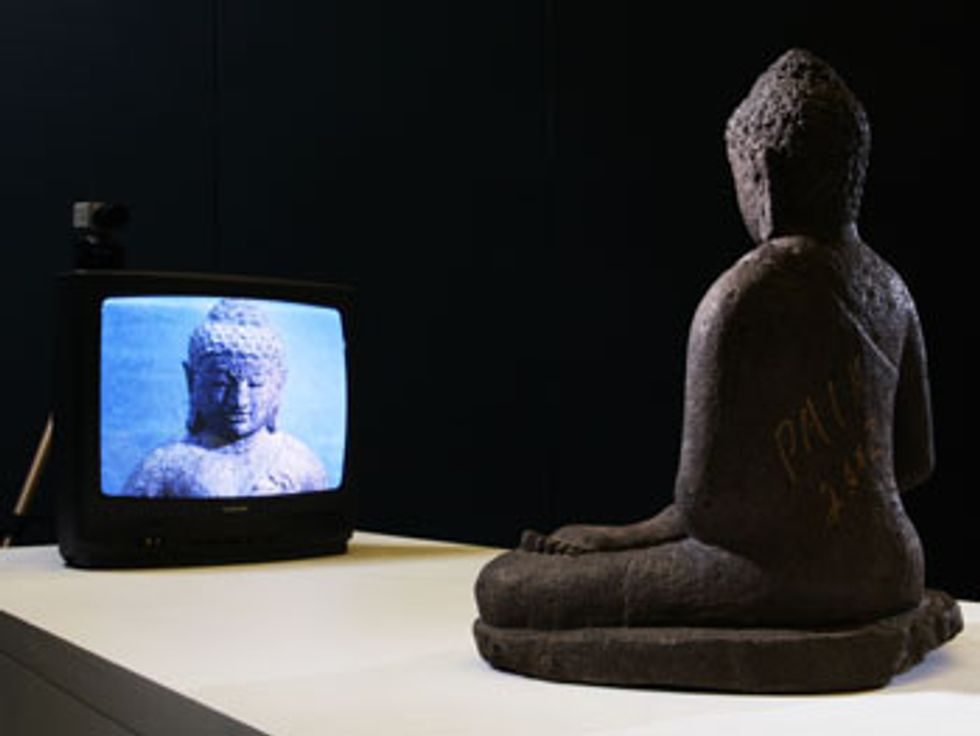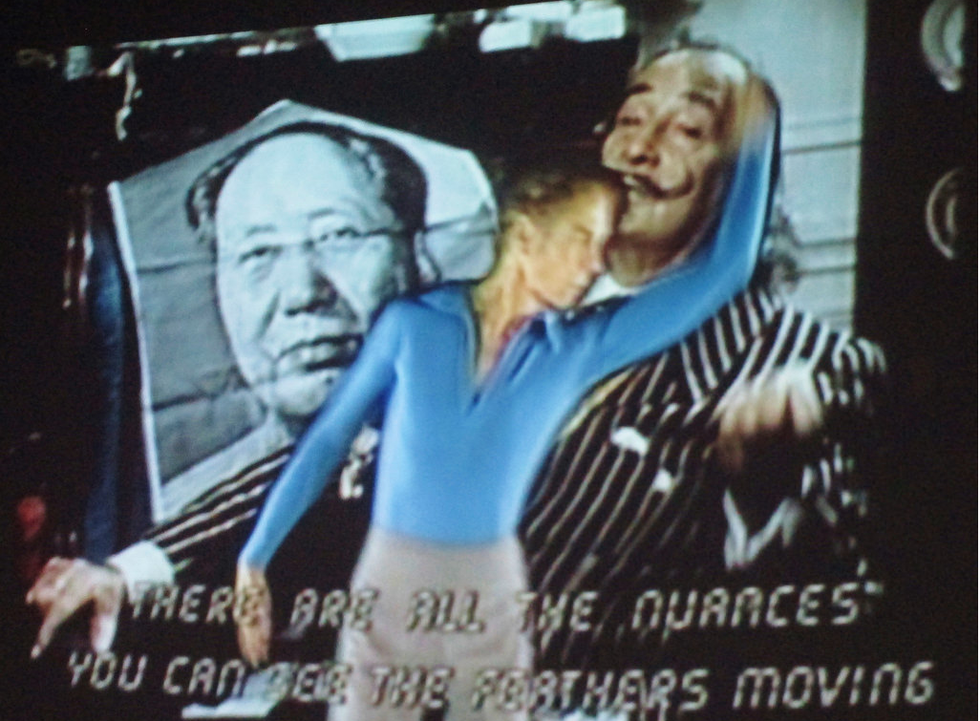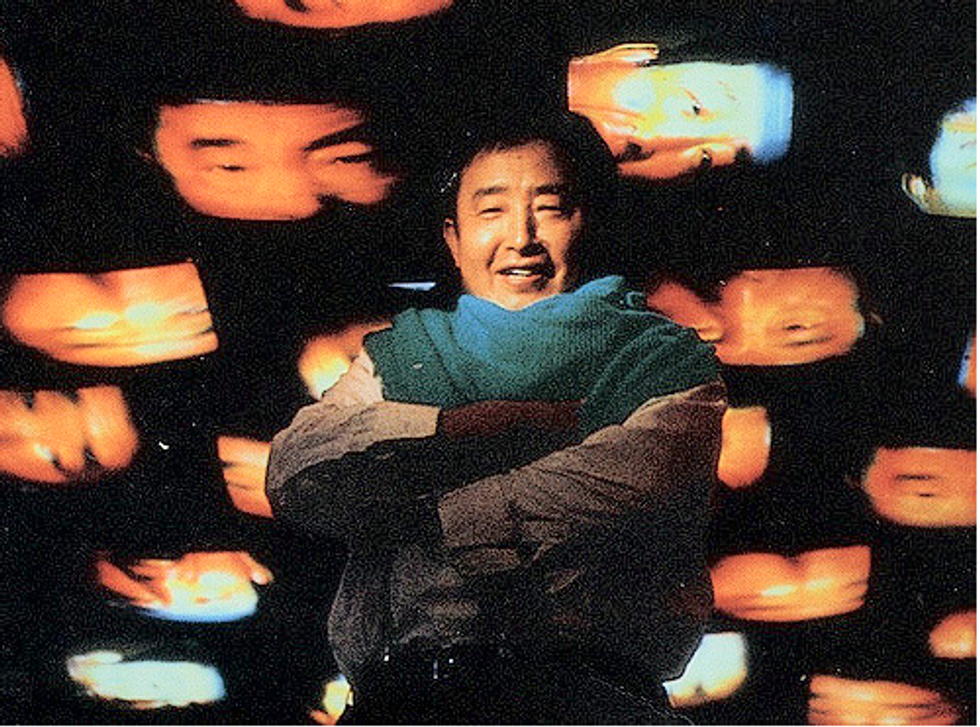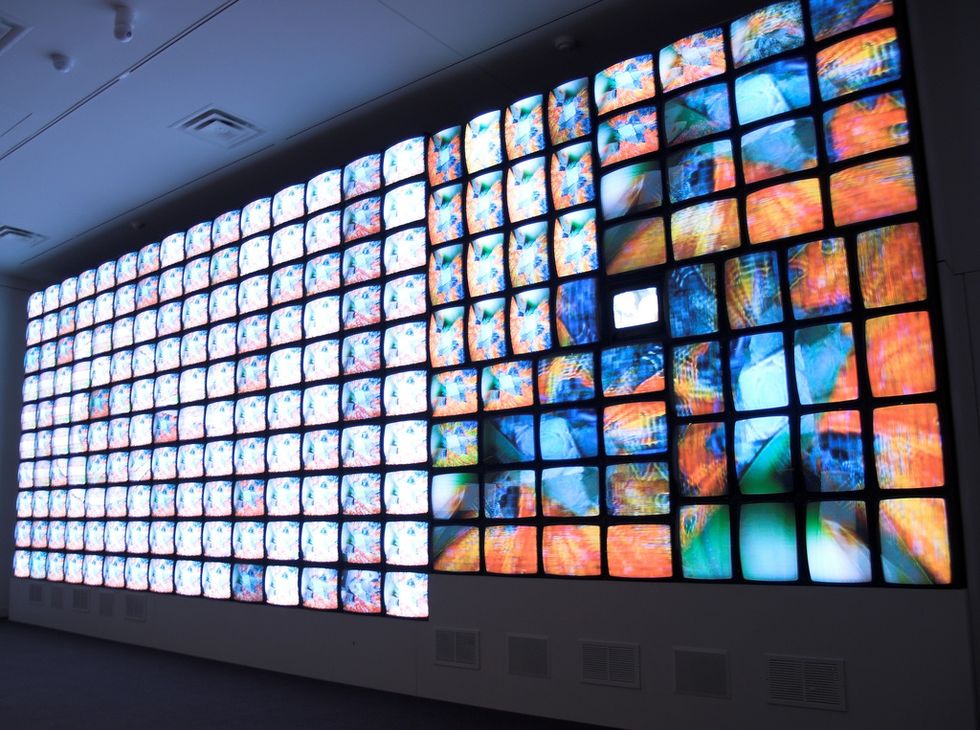"Skin has become inadequate in interfacing with reality. Technology has become the body's new membrane of existence."-Nam June Paik
Nam June Paik, or as he is also known, the "Father of Video Art", was a revolutionary composer, performer, sculptor, and video and digital artist. His works combined audio, visual, and electronic elements. Nam June Paik was started his journey as an artist in his 20s around the early 1950s. The 50s were a milestone for innovative art forms as the public recovered the second World War. There was a new acceptance of art inspired by the avant-garde movements, surrealism, modernism, and abstract art from the 1920s and beyond.
In particular, Paik was heavily involved in the Fluxus movement of the 1960s and modern art. The Fluxus movement was an international avant-garde collective or network of artists and composers founded in the 1960s and continuing into the 2000s. A singular unified approach to art and it pushed the envelope on what art could potentially be. This was the very being of Nam June Paik. Many of his artworks did exactly that: pushed the envelope.
The Korean War (Childhood)
During the Korean War, Paik and his family sought asylum in Hong Kong China. The town in which he settled was Kamakura and was home to a Buddhist temple, which was possibly an early inspiration for his piece TV Buddha (1976). His family owned the only television in their neighborhood and he came to own a Bell and Howell eight-millimeter movie camera in 1956.
Post-War Art Movement in Germany
In 1957 Nam June Paik traveled to West Germany. Due to the outbreak of the Korean War, the U.S mandated the rearmament of West Germany so that they would be prepared to defend Europe in the midst of a Soviet attack. This ultimately led to led other European states to seek tight control over the West German military. The aftermath of this caused a surge of new forms of music and performance arts.
Fluxus Movement
The Fluxus movement was an international avant-garde collective or network of artists and composers founded in the 1960s and continuing into the 2000s.
TV Buddha (1976)

Tv Buddha discusses the issues brought up by technology such as the subliminal awareness that it gives us. This subliminal awareness causes us to be consciously aware of ourselves and our own narcissism. It also discusses the evolution of technology in the sense that it causes us to reflect upon religion. This artwork is comprised of an 18th century Buddha statue sitting and facing towards a television screen that displays the Buddha's face. Having light that reflects off of the Buddha puts emphasis on the main subject of the piece. There is a camera behind the television that constantly records the Buddha. This creates a constant loop of the Buddha being stuck in its own reality. The brass Buddha is positioned "meditation mudra" which is a symbolic gesture in that symbolizes control of the mind. The composition of the piece symbolizes the distance that the Buddha experiences between technology, however, the addition of having the camera constantly transmit an image of the Buddha symbolizes a closeness that the technology experiences between the Buddha.
Good Morning Mr. Orwell

Paik became interested in utilizing satellite technology in order to globally transport information. Good Morning Mr. Orwell represents the world without boundaries that are presented by technology. The title refers to George Orwell's dystopian society in his book 1984 in which technology is represented to cause poor effects on society. However, in Paik's video, it focuses on the positive aspects of technologies advancements and how it can transcend cultures, and aid the connectivity between humans as opposed to George Orwell's writing that portrays the opposite. This artwork is a rebuttal to George Orwell's dystopian views. The work was comprised of computer simulated graphics, musical acts, and some of Paik's previous works. It was intended to demonstrate the positives that technology provides.













